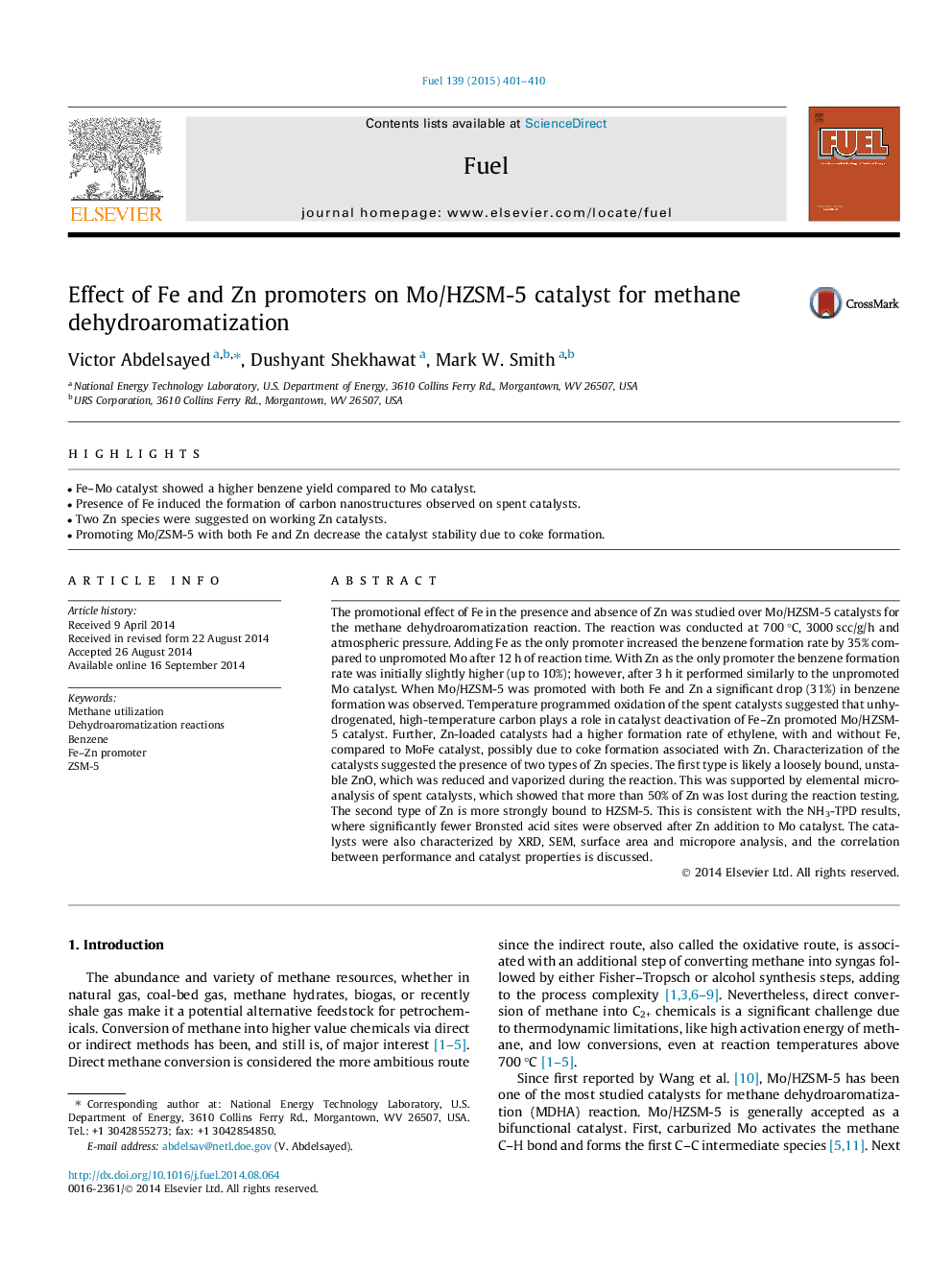| Article ID | Journal | Published Year | Pages | File Type |
|---|---|---|---|---|
| 6636535 | Fuel | 2015 | 10 Pages |
Abstract
The promotional effect of Fe in the presence and absence of Zn was studied over Mo/HZSM-5 catalysts for the methane dehydroaromatization reaction. The reaction was conducted at 700 °C, 3000 scc/g/h and atmospheric pressure. Adding Fe as the only promoter increased the benzene formation rate by 35% compared to unpromoted Mo after 12 h of reaction time. With Zn as the only promoter the benzene formation rate was initially slightly higher (up to 10%); however, after 3 h it performed similarly to the unpromoted Mo catalyst. When Mo/HZSM-5 was promoted with both Fe and Zn a significant drop (31%) in benzene formation was observed. Temperature programmed oxidation of the spent catalysts suggested that unhydrogenated, high-temperature carbon plays a role in catalyst deactivation of Fe-Zn promoted Mo/HZSM-5 catalyst. Further, Zn-loaded catalysts had a higher formation rate of ethylene, with and without Fe, compared to MoFe catalyst, possibly due to coke formation associated with Zn. Characterization of the catalysts suggested the presence of two types of Zn species. The first type is likely a loosely bound, unstable ZnO, which was reduced and vaporized during the reaction. This was supported by elemental microanalysis of spent catalysts, which showed that more than 50% of Zn was lost during the reaction testing. The second type of Zn is more strongly bound to HZSM-5. This is consistent with the NH3-TPD results, where significantly fewer Bronsted acid sites were observed after Zn addition to Mo catalyst. The catalysts were also characterized by XRD, SEM, surface area and micropore analysis, and the correlation between performance and catalyst properties is discussed.
Keywords
Related Topics
Physical Sciences and Engineering
Chemical Engineering
Chemical Engineering (General)
Authors
Victor Abdelsayed, Dushyant Shekhawat, Mark W. Smith,
